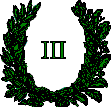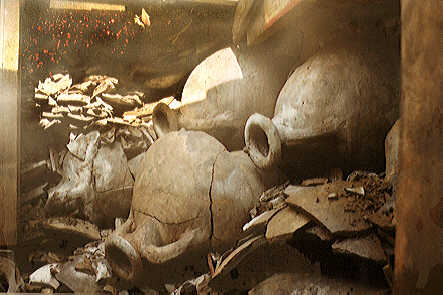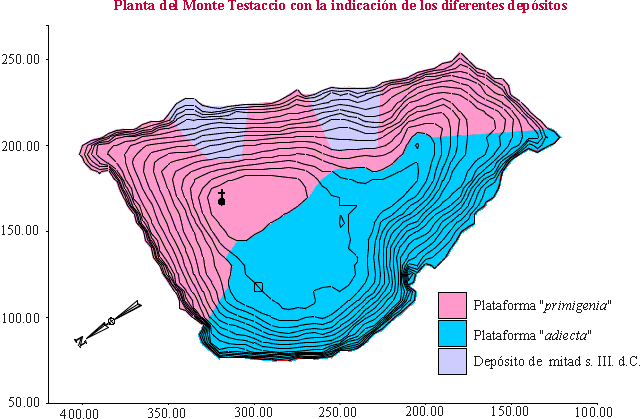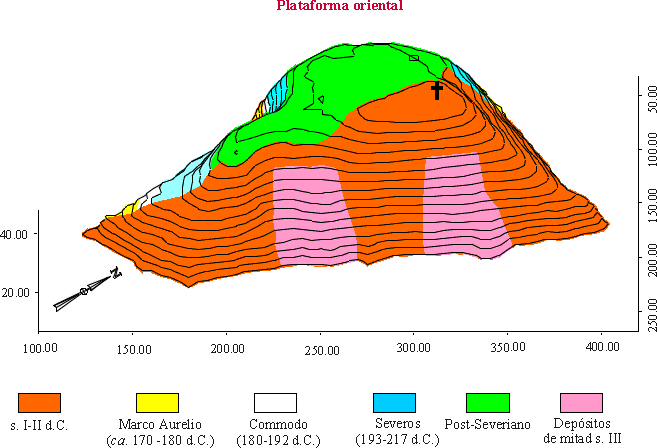 |
THE BIRTH OF MOUNT TESTACCIO. |
 |
THE BIRTH OF MOUNT TESTACCIO. |
Mount Testaccio was an archaeological remain but historically of no importance, until Father Bruzzi and Heinrich Dressel, an italian-prusian scientist, began to study the hill in a cold morning of 1872.
They discovered painted inscriptions on amphoras, also known as tituli picti, typical remains from Testaccio material since in others archaeological sites time and weather conditions made them vanish.
Dressel was the first person in interpreting and outlining the dating of the Mount Testaccio. He thought that the Mount Testaccio started being used from Augustus period until mid third century A. D.
He also suggested that Testaccio amphoras came from the Baetican province (Andalusia, Spain). Moreover he pointed that most amphoras content was olive-oil and he set up the first typological table
After Dressel scholarship, it seemed that nothing else could be said about the Mount Testaccio. It was only in 1968 when the study of Testaccio was resumed again. Emilio Rodriguez Almeida, an Spanish epigraphist living in Italy, started to carry out field surveys on the surface of the hill. Rodriguez Almeida put forward an hypothesis, according to which the Mount Testaccio was the result of the successive phases of organised unloading: from August to the third century A. D.
Finally, in 1989 a Spanish research group began a series of excavations in Mount Testaccio working together with the Department of Earth Sciences from the University of Rome, "La Sapienza". A first row of amphoras was placed with its lower part broken and then, filled with amphora sherds making it heavier enough to resist the pressure of the amphora unloadings.

Dressel 20 amphorae wall found
in excavations in the Mount Testaccio.
A first row of amphoras was placed with its lower part broken and then, filled with amphora sherds making it heavier enough to resist the pressure of the amphora unloadings. When the first row was finish, the amphoras were unloaded until the heap was 60 cm high, which was also the diameter of this type of amphora. After finishing one platform in this way, a second one was created above following the same steps.
The excavations confirmed that Mount Testaccio was formed by two side-by-side platforms with a stepped profile. This evidence shows the way that unloadings were made. Recently, a statistical analysis of Dressel’s excavations has proved that another platform was created in the North-eastern sector in the IIIrd century A.D.
Mount Testaccio level map showing the "stores"


